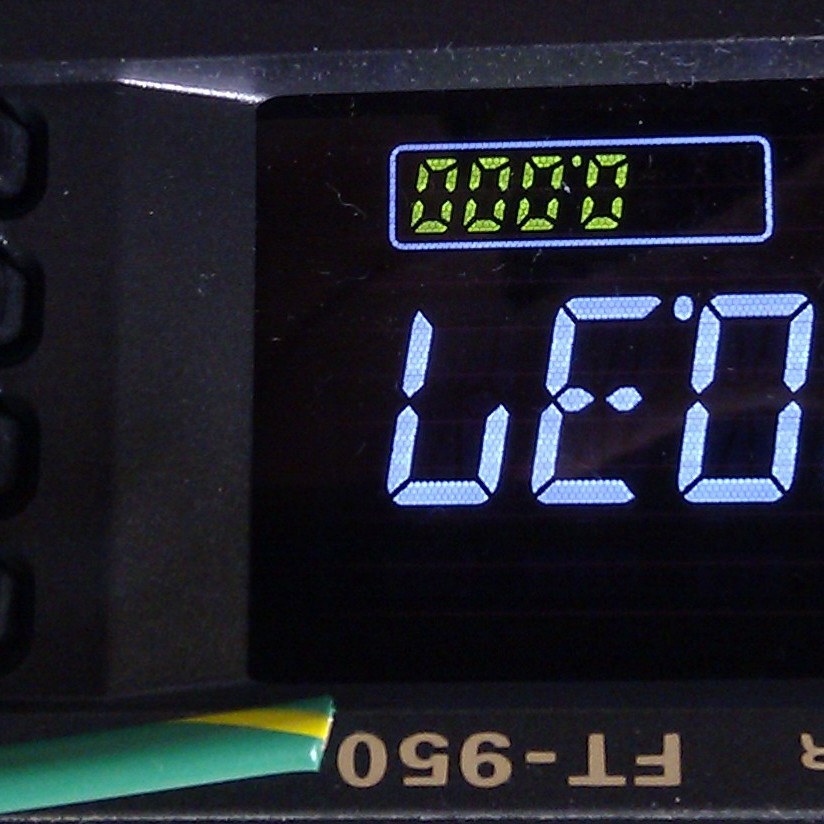Day 13: Point of Incidence
Megathread guidelines
- Keep top level comments as only solutions, if you want to say something other than a solution put it in a new post. (replies to comments can be whatever)
- Code block support is not fully rolled out yet but likely will be in the middle of the event. Try to share solutions as both code blocks and using something such as https://topaz.github.io/paste/ , pastebin, or github (code blocks to future proof it for when 0.19 comes out and since code blocks currently function in some apps and some instances as well if they are running a 0.19 beta)
FAQ
- What is this?: Here is a post with a large amount of details: https://programming.dev/post/6637268
- Where do I participate?: https://adventofcode.com/
- Is there a leaderboard for the community?: We have a programming.dev leaderboard with the info on how to join in this post: https://programming.dev/post/6631465
🔒 Thread is locked until there’s at least 100 2 star entries on the global leaderboard
🔓 Unlocked
Haskell
This was fun and (fairly) easy! Off-by-one errors are a likely source of bugs here.
import Control.Monad import Data.List import Data.List.Split import Data.Maybe score d pat = ((100 *) <$> search pat) `mplus` search (transpose pat) where search pat' = find ((d ==) . rdiff pat') [1 .. length pat' - 1] rdiff pat' i = let (a, b) = splitAt i pat' in length $ filter (uncurry (/=)) $ zip (concat $ reverse a) (concat b) main = do input <- splitOn [""] . lines <$> readFile "input13" let go d = print . sum . map (fromJust . score d) $ input go 0 go 1Line-seconds score:
0.102😉Very pretty again!
What does the line-seconds score mean?
Yep, that’s it. (A totally scientific and non-fakeable measurement! /s)
Python
from .solver import Solver def is_mirrored_x(pattern: set[tuple[int, int]], max_x: int, max_y: int, x_mirror: int, desired_errors: int = 0) -> bool: min_x = max(0, 2 * x_mirror - max_x) max_x = min(max_x, 2 * x_mirror) errors = 0 for y in range(max_y): for x in range(min_x, x_mirror): mirrored = 2 * x_mirror - x - 1 if (x, y) in pattern and (mirrored, y) not in pattern: errors += 1 if (x, y) not in pattern and (mirrored, y) in pattern: errors += 1 if errors > desired_errors: return False return errors == desired_errors def is_mirrored_y(pattern: set[tuple[int, int]], max_x: int, max_y: int, y_mirror: int, desired_errors: int = 0) -> bool: min_y = max(0, 2 * y_mirror - max_y) max_y = min(max_y, 2 * y_mirror) errors = 0 for x in range(max_x): for y in range(min_y, y_mirror): mirrored = 2 * y_mirror - y - 1 if (x, y) in pattern and (x, mirrored) not in pattern: errors += 1 if (x, y) not in pattern and (x, mirrored) in pattern: errors += 1 if errors > desired_errors: return False return errors == desired_errors def find_mirror_axis(pattern: set[tuple[int, int]], max_x: int, max_y: int, desired_errors: int = 0) -> tuple[None, int]|tuple[int, None]: for possible_x_mirror in range(1, max_x): if is_mirrored_x(pattern, max_x, max_y, possible_x_mirror, desired_errors): return possible_x_mirror, None for possible_y_mirror in range(1, max_y): if is_mirrored_y(pattern, max_x, max_y, possible_y_mirror, desired_errors): return None, possible_y_mirror raise RuntimeError('No mirror axis found') class Day13(Solver): def __init__(self): super().__init__(13) self.patterns: list[set[tuple[int, int]]] = [] self.dimensions: list[tuple[int, int]] = [] def presolve(self, input: str): patterns = input.rstrip().split('\n\n') for pattern in patterns: lines = pattern.splitlines() points: set[tuple[int, int]] = set() max_x = 0 max_y = 0 for y, line in enumerate(lines): max_y = max(max_y, y) for x, char in enumerate(line): max_x = max(max_x, x) if char == '#': points.add((x, y)) self.patterns.append(points) self.dimensions.append((max_x + 1, max_y + 1)) def solve_first_star(self) -> int: sum = 0 for pattern, (max_x, max_y) in zip(self.patterns, self.dimensions, strict=True): mirror_x, mirror_y = find_mirror_axis(pattern, max_x, max_y) sum += (mirror_x or 0) + (mirror_y or 0) * 100 return sum def solve_second_star(self) -> int: sum = 0 for pattern, (max_x, max_y) in zip(self.patterns, self.dimensions, strict=True): mirror_x, mirror_y = find_mirror_axis(pattern, max_x, max_y, 1) sum += (mirror_x or 0) + (mirror_y or 0) * 100 return sumScala3
// i is like // # # # # # // 1 2 3 4 def smudgesAround(i: Int, s: List[List[Char]]): Long = val toEdge = math.min(i, s.size - i) (0 until toEdge).map(e => s(i - e - 1).lazyZip(s(i + e)).count(_ != _)).sum def symmetries(g: List[List[Char]], smudges: Int) = val rows = (1 until g.size).filter(smudgesAround(_, g) == smudges) val g2 = g.transpose val cols = (1 until g2.size).filter(smudgesAround(_, g2) == smudges) 100*rows.sum + cols.sum def task1(a: List[String]): Long = a.chunk(_ == "").map(g => symmetries(g.map(_.toList), 0)).sum def task2(a: List[String]): Long = a.chunk(_ == "").map(g => symmetries(g.map(_.toList), 1)).sumWouldn’t this code fail in a case like this? Because you count different lines, not different characters in the lines, right? Or am I missing something? Thanks (Let’s ignore column symmetry for the sake of example).
## .. .. ..(I think you will get answer 100, but the answer is 300)
But for sure after seeing this I have to learn Scala.
On your example, my code produces 301, which matches your 300 ignoring column symmetry (and 0 for task2, as there is no way to smudge a single cell to create symmetry).
Let me explain the code real quick: What
smudgesArounddoes is compute the number of tiles you would need to change to create a symmetry around indexi. First,toEdgeis the number of tiles to the nearest edge, everything after that will be reflected outside the grid and won’t matter. Then, for each actually relevant distance, we compare the rows/columns this distance fromi. By zipping them, we create an Iterator that first yields the pair of first entries, then the pair of second entries, and so on. On each pair we apply a comparison, to count the number of entries which did not match. This is the number of smudges we need to fix to get these rows/columns to match. Summing over all relevant pairs of rows/columns, we get the total number of smudges to makeia mirror line. In symmetries, we just check eachi, for task1 we want a mirror line without smudges and for task2 we want a mirror line for exactly oneYou can also make this quite a bit shorter, if you want to sacrifice some more readability:
def compute(a: List[String], sm: Int) = a.chunk(_ == "").map(_.map(_.toList)).map(g => Seq(g, g.transpose).map(s => (1 until s.size).filter(i => (0 until math.min(i, s.size - i)).map(e => s(i - e - 1).zip(s(i + e)).count(_ != _)).sum == sm).sum).zip(Seq(100, 1)).map(_ * _).sum).sum def task1(a: List[String]): Long = compute(a, 0) def task2(a: List[String]): Long = compute(a, 1)Oh, I see, I for some reason switched zip operation with “create pair/tuple” operation in my head. Thanks for clarification.
Rust
Part 2 turned out easier than I thought initially. My code assumes that there is only 1 mirror in each field which means I don’t have to remember where the smudge is, I just have to find a mirror line where the two halves differ at exactly one spot.
C
Implementing part 1 with a bunch of for loops made me wonder about elegant NumPy solutions but then part 2 came along and it was a perfect fit! Just change a flag to a counter and remove the if-match-early-exit.
https://github.com/sjmulder/aoc/blob/master/2023/c/day13.c
int main() { static char g[32][32]; int p1=0,p2=0, w,h, x,y,i, nmis; while (!feof(stdin)) { for (h=0; ; h++) { assert(h < (int)LEN(*g)); if (!fgets(g[h], LEN(*g), stdin)) break; if (!g[h][0] || g[h][0]=='\n') break; } assert(h>0); w = strlen(g[0])-1; assert(w>0); for (x=1; xDart
Just banging strings together again. Simple enough once I understood that the original reflection may also be valid after desmudging. I don’t know if we were supposed to do something clever for part two, but my part 1 was fast enough that I could just try every possible smudge location and part 2 still ran in 80ms
bool reflectsH(int m, List p) => p.every((l) { var l1 = l.take(m).toList().reversed.join(''); var l2 = l.skip(m); var len = min(l1.length, l2.length); return l1.take(len) == l2.take(len); }); bool reflectsV(int m, List p) { var l1 = p.take(m).toList().reversed.toList(); var l2 = p.skip(m).toList(); var len = min(l1.length, l2.length); return 0.to(len).every((ix) => l1[ix] == l2[ix]); } int findReflection(List p, {int butNot = -1}) { var mirrors = 1 .to(p.first.length) .where((m) => reflectsH(m, p)) .toSet() .difference({butNot}); if (mirrors.length == 1) return mirrors.first; mirrors = 1 .to(p.length) .where((m) => reflectsV(m, p)) .toSet() .difference({butNot ~/ 100}); if (mirrors.length == 1) return 100 * mirrors.first; return -1; //never } int findSecondReflection(List p) { var origMatch = findReflection(p); for (var r in 0.to(p.length)) { for (var c in 0.to(p.first.length)) { var pp = p.toList(); var cells = pp[r].split(''); cells[c] = (cells[c] == '#') ? '.' : '#'; pp[r] = cells.join(); var newMatch = findReflection(pp, butNot: origMatch); if (newMatch > -1) return newMatch; } } return -1; // never } Iterable> parse(List lines) => lines .splitBefore((e) => e.isEmpty) .map((e) => e.first.isEmpty ? e.skip(1).toList() : e); part1(lines) => parse(lines).map(findReflection).sum; part2(lines) => parse(lines).map(findSecondReflection).sum;I decided to use string comparison for some reason, which meant part two wasn’t as quick as it would have been.
use std::{cmp, fs, iter}; fn transpose(rows: &[&str]) -> Vec { (0..rows[0].len()) .map(|i| { let bytes: Vec<_> = (0..rows.len()).map(|j| rows[j].as_bytes()[i]).collect(); String::from_utf8(bytes).unwrap() }) .collect() } fn reflection_value(rows: &[&str]) -> Option { 'row_loop: for i in 0..(rows.len() - 1) { if rows[i] != rows[i + 1] { continue; } // we have an initial match let other_matches = cmp::min(i, rows.len() - 2 - i); for j in 1..=other_matches { if rows[i - j] != rows[i + 1 + j] { continue 'row_loop; } } return Some(i as u32 + 1); } None } fn summary(file_path: &str) -> u32 { fs::read_to_string(file_path) .expect("Can't read input file") .split("\n\n") .map(|s| { let rows: Vec<&str> = s.split('\n').collect(); if let Some(v) = reflection_value(&rows) { v * 100 } else { let cols_owned: Vec = transpose(&rows); let cols: Vec<&str> = cols_owned.iter().map(|s| s.as_str()).collect(); reflection_value(&cols).expect("No reflections found") } }) .sum() } fn str_diff(str1: &str, str2: &str) -> u32 { iter::zip(str1.chars(), str2.chars()) .map(|(s1, s2)| if s1 == s2 { 0 } else { 1 }) .sum() } fn smudged_reflection_value(rows: &[&str]) -> Option { for i in 0..(rows.len() - 1) { let num_cmps = cmp::min(i, rows.len() - 2 - i); let errs: u32 = (0..=num_cmps) .map(|j| str_diff(rows[i - j], rows[i + 1 + j])) .sum(); if errs != 1 { continue; } return Some(i as u32 + 1); } None } fn smudged_summary(file_path: &str) -> u32 { fs::read_to_string(file_path) .expect("Can't read input file") .split("\n\n") .map(|s| { let rows: Vec<&str> = s.split('\n').collect(); if let Some(v) = smudged_reflection_value(&rows) { v * 100 } else { let cols_owned: Vec = transpose(&rows); let cols: Vec<&str> = cols_owned.iter().map(|s| s.as_str()).collect(); smudged_reflection_value(&cols).expect("No reflections found") } }) .sum() } fn main() { println!(" normal: {}", summary("d13/input.txt")); println!("smudged: {}", smudged_summary("d13/input.txt")); }Nim
Part 1: For part 1 I just compare rows, then transpose matrix and compare rows again.
Part 2: For part 2 I compare rows and get symmetry type for each comparison: symmetric(==), almost symmetric (1 smudge), not symmetric (2+ difference). Then I just use two booleans to make sure we found exactly one smudge in each mirror.Total runtime: 0.3 ms
Puzzle rating: 6/10
Code: day_13/solution.nimNim
This one was a nice change of pace after the disaster of day 12. For part 1 I kept a list of valid column indexes, and checked those columns in each row for reflections, eliminating columns from the list as I went. To find vertical reflections, I just transposed the grid first.
Part 2 looked daunting at first, but I just needed to add a
smudgescounter to each column candidate, eliminating them when their counter reaches 2. For scoring, just count the 1-smudge columns.Hi there! Looks like you linked to a Lemmy community using a URL instead of its name, which doesn’t work well for people on different instances. Try fixing it like this: !nim@programming.dev












